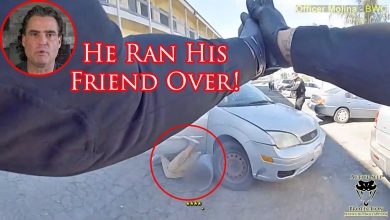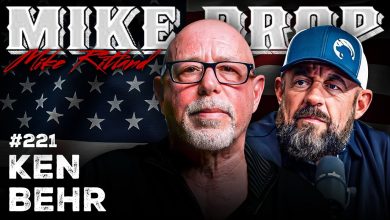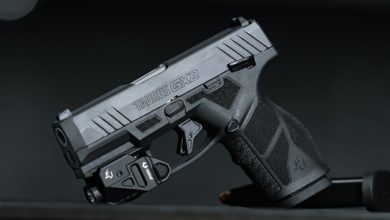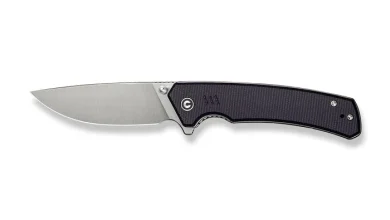Are Deer Rifles Suitable For Elk Hunting?
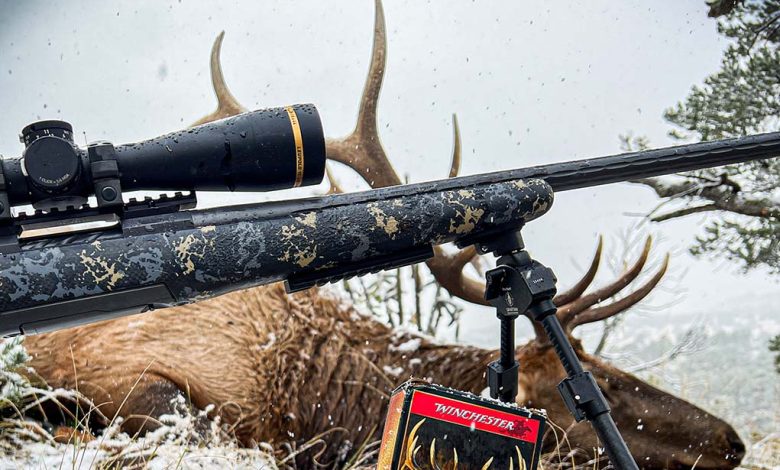
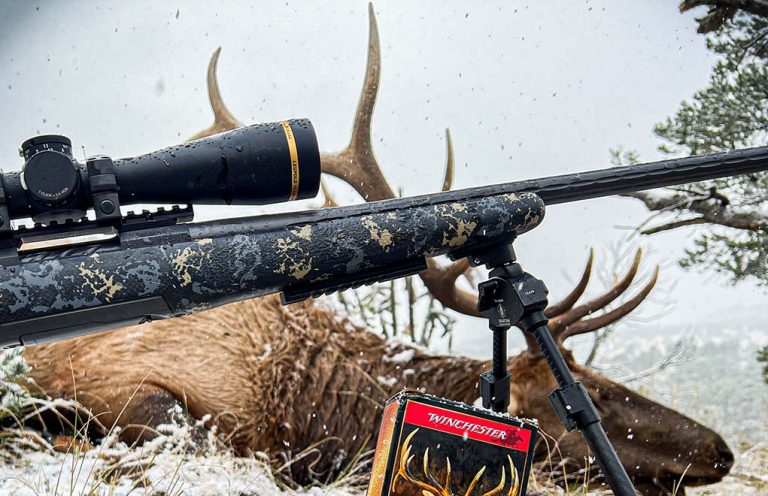
We discuss the recipe for success when using standard deer rifles to hunt the monarch of the West.
Heated debates about cartridges and their killing capabilities, or lack thereof, have been topics of campfire banter for decades. However, one ideology that few will disagree with is that a mature bull elk is a formidable foe that requires precision and ample knockdown power. Certain cartridges are undoubtedly more qualified than others to hunt elk, but that doesn’t mean your trusty deer rifle can’t get the job done. Below is a recipe to successfully hunt the mighty wapiti, regardless of which rifle you take into the woods.
Growing up in the West, I’ve taken the opportunity to hunt elk for granted. I killed my first elk at 12 years old and have punched many tags in the last 21 years. I have also spent the last 11 years as a hunting guide in Northern Utah. These experiences have allowed me to witness over 75 mature bulls—and a couple of hundred cow elk—hit the dirt. My approach to effective elk cartridges has always been “the bigger, the better,” but that doesn’t always hold, and my views have slowly shifted with time. There is much more to killing elk than just “carrying a big stick.”
Lessons Learned
Hunting is a revolving educational experience in which I strive to be an astute student. In late October, I found myself in a remote corner of Colorado preparing for an upcoming mule deer hunt. With camp set up and firewood cut, we set out to verify our rifles’ zeros on the eve of opening day. Two trucks toting Pennsylvania license plates pulled up as we finished shooting, and seven blaze orange-clad hunters piled out. They were friendly folks, and we struck up a conversation while they sighted in their rifles. For five of them, it was their first elk hunting adventure, while the other two, a gentleman in his 70s and his son in his late 40s, had been coming west for years. Three hunters were shooting .30-06s, two the 6.5 PRC and another a .270 Win. When it was the senior group leader’s turn to shoot, he pulled out a well-used but manicured Winchester Pre-64 Model 70 chambered in .257 Roberts.
“A little light for a big bull, isn’t it?” I chuckled. “I’ve killed dozens of elk who would whole-heartedly disagree,” the gentleman piped back. He steadied his rifle and fired two nearly touching shots into the target at 100 yards. “That’ll do. I don’t shoot them much farther than that anyway,” he said. True to his persona, he was shooting 117-grain Remington Core-Lokt ammunition from a weathered box that appeared older than me. While his setup was lighter than I would use, I understood why this rifle had treated him well for so many years.
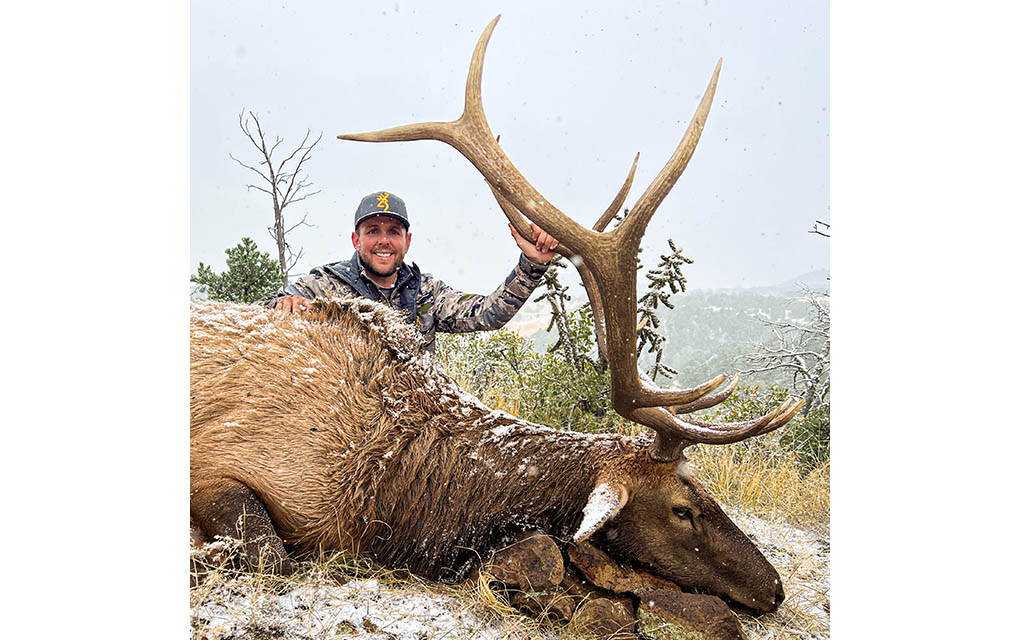

Absolute Truths
This experience drove home three absolute truths about the ethics of killing an elk. First and foremost, he was comfortable with his rifle and shot it well. No matter your caliber of choice, if you cannot precisely place a bullet in the kill zone, your lead-slinging elk cannon is nothing but a boat anchor slung over your shoulder. Do whatever it takes to become proficient with the rifle you take into the elk woods and practice often. Take your practice one step further and shoot from various shooting positions using a variety of shooting aids. I hate to be the bearer of bad news, but the chances of shooting an elk from a bench are slim.
Second, the gentleman was shooting a well-constructed bullet designed to penetrate through muscle and bone. Your bullet selection, especially with smaller cartridges, can mean the difference between the agony of wounding an animal and a punched tag. The market is flooded with an overwhelming number of bullets to choose from, and depending on what caliber you are shooting, some will perform better than others on elk.
His bullet of choice, the Remington Core-Lokt, is a “cup and core” type designed to rapidly expand and penetrate due to its thin copper jacket and dense lead core. Hornady’s ELD-X and Sierra GameKing bullets are similarly designed to expand on impact while retaining a good portion of their weight to drive home through obstructive bone.
Bonded bullets are another highly effective bullet in the elk woods, utilizing an electrochemically fused bond between the bullet jacket and lead core. This bond slows bullet expansion and guarantees maximum penetration via high bullet weight retention. Nosler’s renowned Accubond bullet is a favorite among elk hunters for many reasons, most importantly because it’s proven itself time and time again as extremely capable and efficient on elk. Other popular bonded bullets include the Federal Terminal Ascent and the Swift Scirocco.
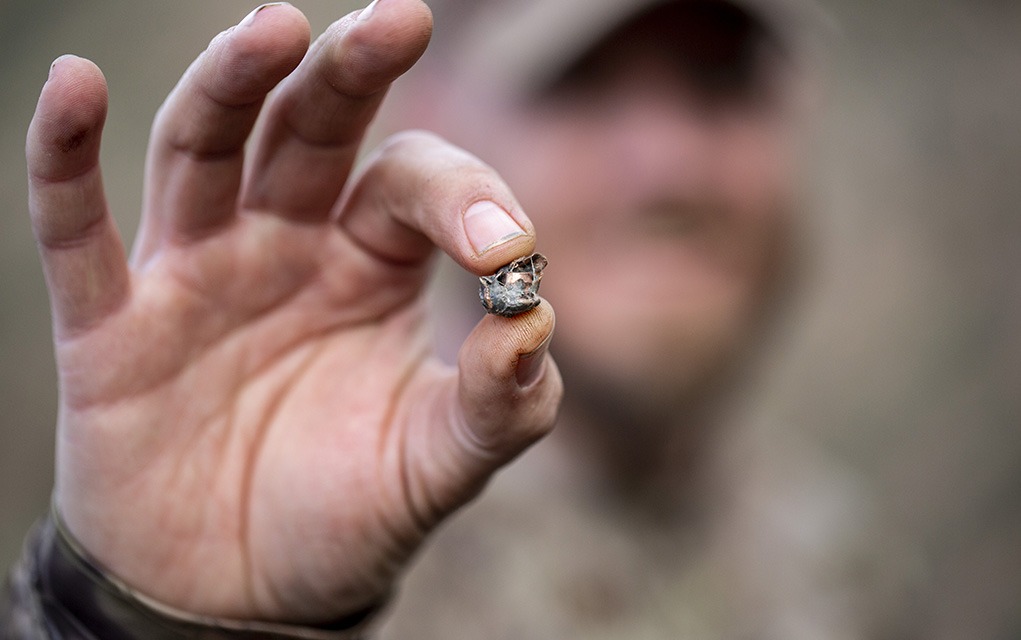

Monometal, or full copper bullets, have been around for decades but have gained steam recently, and for good reason. They provide hunters maximum penetration and often near 100 percent weight retention. Copper bullets will not produce wound channels nearly as large as the previously mentioned, but they will out-penetrate them and still inflict plenty of trauma. I have killed bulls in Colorado and New Mexico with Winchester’s Copper Impact ammo. Both bulls were dead in seconds with a single well-placed shot. I’ve also had great success with Hornady’s recently launched monometal CX bullet and several variations of monometal bullets from Barnes.
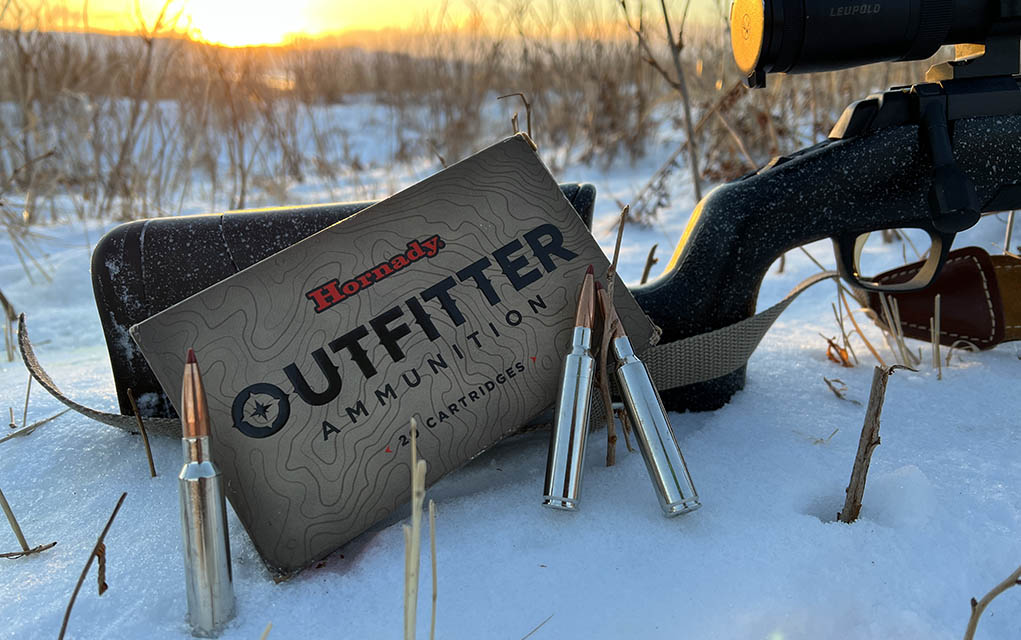

The last but certainly not least important lesson that we can learn from the veteran elk hunter is to know your rifle’s limitations and stick to them. The generally accepted energy threshold to ethically kill an elk is 1,500 ft-lb. The range at which your bullet drops below this mark will vary drastically depending on your cartridge and bullet selection. For the .257 Roberts that the gentleman was shooting, his bullet drops below this mark at just under 200 yards. Given that he rarely shoots beyond 100 yards, it’s easy to understand why that caliber/load combination has enough knockdown power to quickly and efficiently kill an elk inside 200 yards. On the flip side, a .300 Win. Mag., shooting Nosler’s 180-grain Accubond does not dip below the 1,500 ft-lb benchmark until just beyond 600 yards. I’m not saying that you should or should not shoot at that distance, but the difference in downrange energy between these two is night and day.
Another relevant example that needs to be addressed (due to its healthy dose of hazing within the elk hunting community) is the terminal performance of the 6.5 Creedmoor. The reality is that most problems elk hunters face when using the 6.5 Creedmoor are self-inflicted, lacking an understanding of the cartridge’s capabilities. For example, Hornady’s Precision Hunter ammunition, loaded with a 143-grain ELD-X bullet, drops below that 1,500 ft-lb mark around 400 yards. Inside that range, the cartridge is extremely capable of killing elk; I have seen it many times. Shooting beyond that distance, you are rolling the dice on the terminal performance of a good shot, let alone a less-than-ideal shot placement.
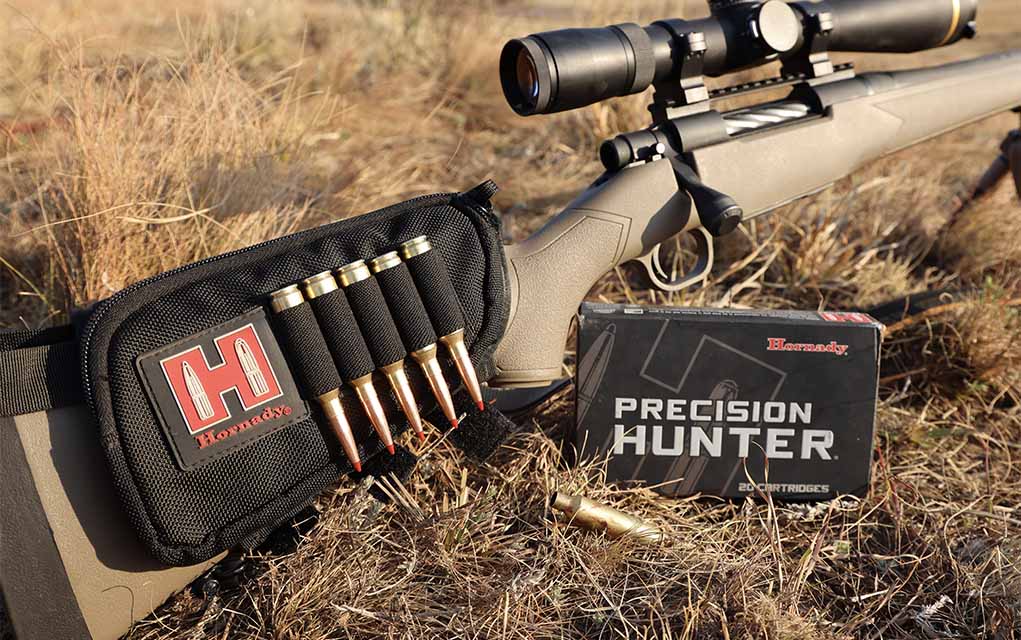

Plain and simple, a mature bull elk is over 700 pounds of raw muscle and sheer determination to survive in some of the most rugged environments in North America. Being proficient with your rifle, using a well-constructed bullet, and knowing your rifle’s limitations will substantially increase your odds of success when you go toe-to-toe with one of these monarchs.
Elk Cartridge Selection For Deer Rifles
All cartridges have pros and cons that must be considered when hunting elk and will differ from hunter to hunter. In true battle satire, I have broken down a list of popular and proven elk hunting cartridges into three weight classes: welterweight, middleweight and heavyweight. The cartridges included are not inclusive but represent various options ranging from vintage classics to the latest and greatest hot rods released in recent years.
Welterweight
Many of the most popular deer hunting cartridges fall into the welterweight category, encompassing all cartridges built on the .243-, .257-, and .264-caliber platforms. The typical welterweights include .243 Winchester, .25-06 Remington, 6.5 Creedmoor, 6.5 Weatherby RPM and 6.5 PRC. All can kill an elk, but each requires immense attention to detail, marksmanship and a deep-penetrating bullet. While I would not buy a rifle chambered in one of these cartridges to specifically go elk hunting, they can serve as a dual-purpose deer and elk rifle when needed.
The biggest advantage to using welterweight cartridges is their lack of recoil and ability to rapidly reacquire your target for a follow-up shot. This matters because none of them will immediately knock a bull off its feet, and a second or third shot is often required regardless of what you are shooting. Less recoil also minimizes “flinching” and equates to more precise shots, which is crucial when shooting elk.
I like to shoot elk on the shoulder and break them down. That makes for a quick tracking job. However, when using lighter cartridges, make an adjustment and push your crosshairs back 4 inches behind the crease of the shoulder and squeeze the trigger. That maximizes penetration and steers you away from the dense shoulder bone. Executing this shot with a well-constructed bullet will easily punch through both lungs and put the elk down quickly. Remember that even with a perfect shot, an elk may not react to the shot. I’ve seen many elk get shot with lighter cartridges and not react to the bullet impact. Often, they run out of sight. Upon further inspection to double-check for blood and verify the miss, we find them lying dead less than a hundred yards from the original impact. Always check for blood.
It is also worth noting that, with very few exceptions, most of these cartridges are intended to shoot elk inside 300 yards. The 6.5 Creedmoor can extend to 400 yards and the 6.5 PRC to just over 500 before dipping below 1,500 ft-lb, but always be cognizant of their limitations and do your best to stay well within them. Just because you can regularly ring steel with them at 750 yards does not mean you should be flinging lead at an elk at that distance.
Middleweight
There is a plethora of extremely capable .277- and .284-caliber cartridges in the market. These middleweights offer elk hunters a substantial advantage in knockdown power by jumping dramatically in bullet weight from their welterweight relatives. The most common bullet weights drift between 140 and 175 grains. The heavier bullets and increased speeds also extend these cartridges’ effective range.
Classic middleweight cartridges include the .270 Winchester, 7mm Remington Magnum and .280 Remington. The .270 Win., thanks to legendary gun writer Jack O’Connor’s exploits, is revered as one of the greatest hunting cartridges ever. His “No. 1” rifle was a Winchester custom Model 70 chambered in .270 Win. He openly advocated for the .270 and successfully killed many elk with that rifle. Interestingly enough, in much of O’Connor’s writing, he, too, urged hunters to stay clear of the shoulder and pick shots wisely on elk-sized game.
While the .270 Win. and 7mm Rem. Mag. are still relevant and capable cartridges, the middleweight division has seen several new offerings that outperform these classics. New cartridges always take much flack over their validity, but you can’t argue with the downrange numbers. New rounds—such as the 6.8 Western, 7mm PRC, and the 28 Nosler—outperform their classic counterparts. They separate themselves from the pack the farther you extend your effective range. For example, the .270 Win., shooting a 150-grain Nosler Accubond, drops below 1,500 ft-lb of energy at 500 yards and has 48.4 inches of bullet drop. The 6.8 Western, shooting a 165-grain Nosler Accubond, still packs 1,856 ft-lb at 500 yards and only 36 inches of drop. The same comparison could be made between the 7mm Rem. Mag. and both the 28 Nosler and 7mm PRC.
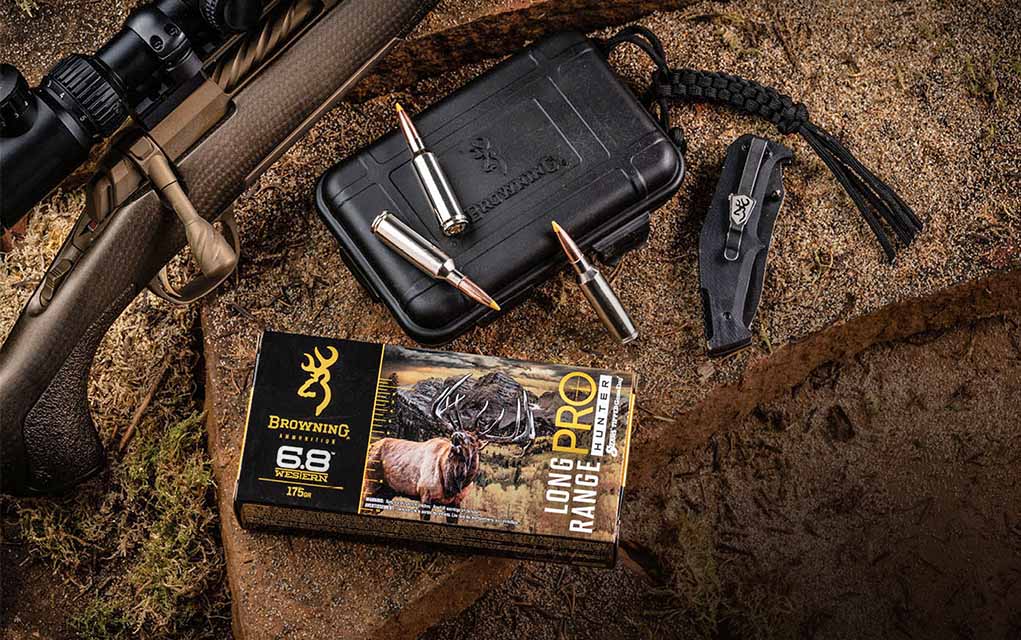

Another noticeable advantage these middleweight cartridges offer is a wide variety of bullet options. Any bullets above from these cartridges can take a rut-crazed bull cleanly. Middleweight cartridges will have more recoil than the welterweights, but with a good muzzle brake or suppressor, the additional recoil is minimal and well worth the added performance.
Growing up, I had the opportunity to punch many elk tags thanks to my 7mm Remington Mag. shooting 140-grain Barnes TSX bullets. This rifle will always have a special place in my safe, but it rarely sees the light of day anymore. My last two bulls fell to a single shot from the 6.8 Western, shooting 162-grain Winchester Copper Impact ammo. In Africa, I’ve taken the elk-sized kudu with the 7mm PRC, and it performed as expected with another quick one-shot kill. These new cartridges are not the end-all answer to the perfect elk hunting rifle, but they unquestionably give hunters an advantage in terminal performance, especially at extended distances that are very common when hunting the West.


Heavyweight
The heavyweight division is stacked with many .308- and .338-caliber cartridges that have long been touted as the most versatile rifle rounds for elk. Plain and simple, these heavyweights can take any animal in North America, given proper bullet selection. Classic .30-caliber choices include the .30-06 Springfield, .308 Winchester and .300 Winchester Magnum. There has also been an onslaught of new .30-cal. cartridges launched, the most popular being the .300 PRC and the 30 Nosler. The .338-caliber has also amassed several noteworthy cartridges, including the .338 Ultra Mag., 33 Nosler and .338 Weatherby RPM. If you are looking for the hardest-hitting, most-powerful rifles to take into the elk woods, these heavyweight cartridges are your huckleberry.
The additional downrange energy is impressive. On many occasions, I’ve seen massive bulls knocked clean over without as much as a twitch from the heavyweight rounds. But everything comes at a price. Recoil, especially without a brake or suppressor, can be downright uncomfortable. Additional recoil makes follow-up shots more difficult, as the rifle’s jump will take you off your target. But, if you can manage the recoil and execute a precise shot with a heavyweight cartridge, you will reap the benefits of devastating terminal performance.
The wide variety of cartridges in the heavyweight class gives you an array of bullet options, ranging from 150 to 225 grains or more—plenty to harvest a massive bull. Given a heavier bullet with a high ballistic coefficient, it’s not uncommon for many of these cartridges to produce downrange energy north of 1,500 ft-lb well beyond 800 yards, especially in the newer cartridges. Again, I’m not advocating shooting elk at that distance, but it certainly means that at 300 or 400 yards, your bullet still has the energy of a freight train.
Several years ago, I built a custom 30 Nosler, which, with a 210-grain Accubond, hits animals like the hammer of Thor. I have killed everything from eland in Africa to elk, deer, and antelope in the States using it with zero problems. With a radial muzzle brake, the recoil is manageable enough that even my wife enjoys shooting it.
Heavyweight cartridges might not be for everyone, but they undoubtedly pack the greatest downrange performance of the lot. However, their performance will not trump a marginal shot. Do not sacrifice precision for power when squeezing the trigger on a big bull. And for the love of all that is good, regardless of your rifle, keep shooting until that bull is on the dirt! Do not hesitate to send an insurance shot into the downed bull to ensure it is anchored. I cannot count the number of times that I have seen a bull collapse from the shot, only to jump back up minutes later, never to be seen again. This situation is often the result of a high shot that shocked the spinal column, temporarily paralyzing the bull but not breaking any bone. Such heartbreak is easily avoided with a quick follow-up shot.
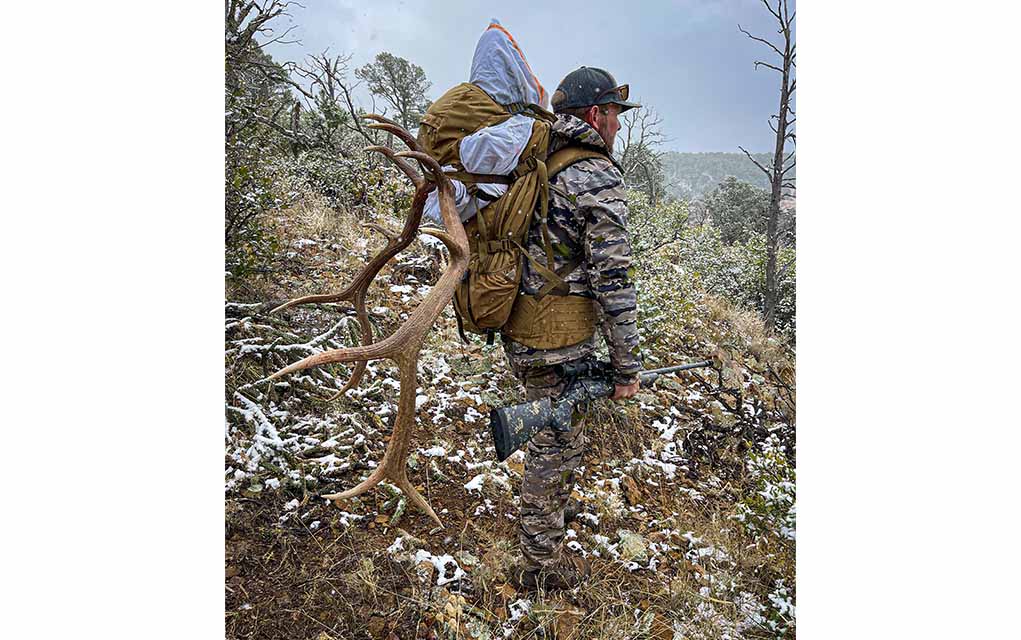

Elk do not come easily; each one is earned in its own way. Whether you head into the elk woods with your “old reliable” deer rifle or spend some money and purchase one chambered in a hot new cartridge, do yourself and the elk a favor and heed the absolute truths that the veteran elk hunter in Colorado exemplified. Be confident and proficient with your rifle, know its limitations and stick to them, and shoot a well-constructed bullet. You still have to locate the elk and close the distance, but this is a recipe for success to quickly and ethically kill the elk of your dreams.
Embrace the entire experience and the special places that elk hunting takes you. Few things are more exhilarating than hearing an elk bugle, and few delicacies are better than those from a freezer full of elk meat. With the correct elk cartridge, both can be yours next season!
Editor’s Note: This article is an excerpt of Gun Digest 2024, 78th edition.
Raise Your Ammo IQ:
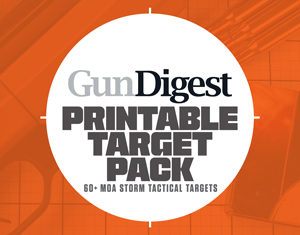

Next Step: Get your FREE Printable Target Pack
Enhance your shooting precision with our 62 MOA Targets, perfect for rifles and handguns. Crafted in collaboration with Storm Tactical for accuracy and versatility.
Subscribe to the Gun Digest email newsletter and get your downloadable target pack sent straight to your inbox. Stay updated with the latest firearms info in the industry.


